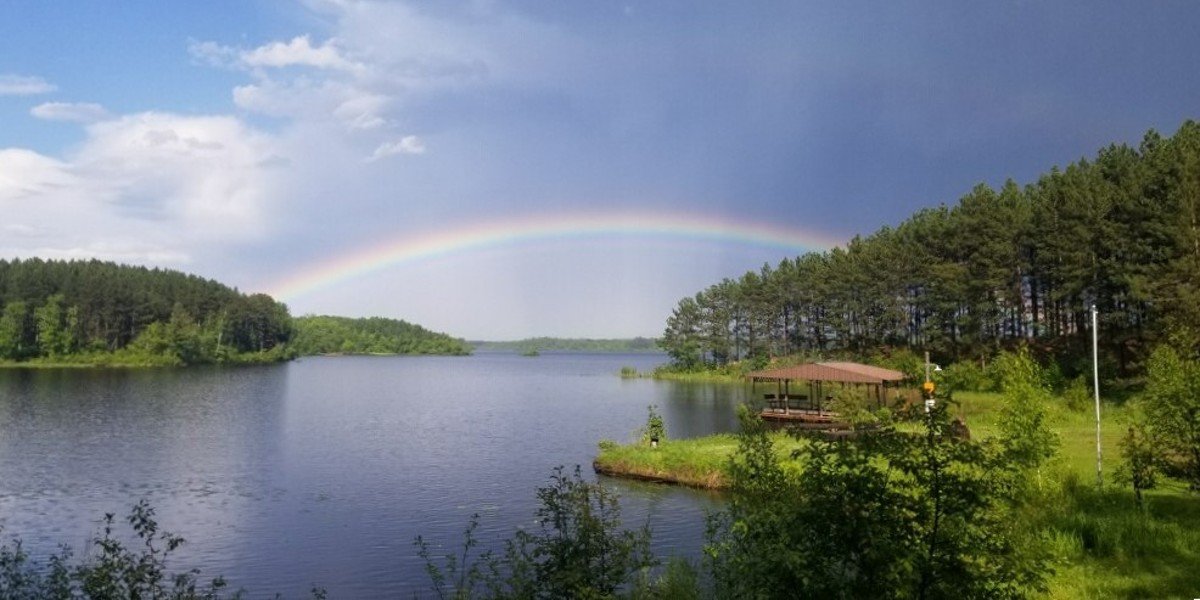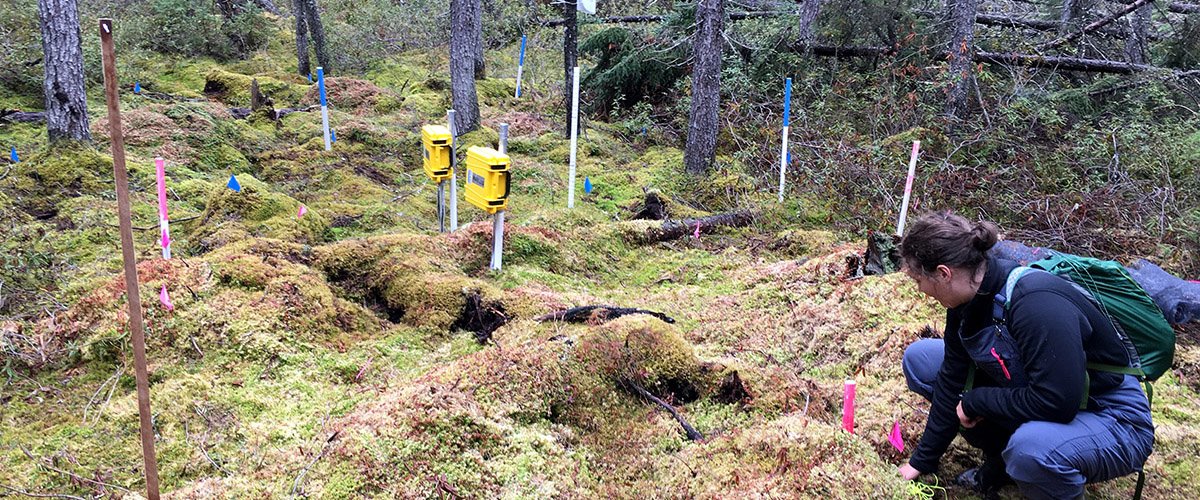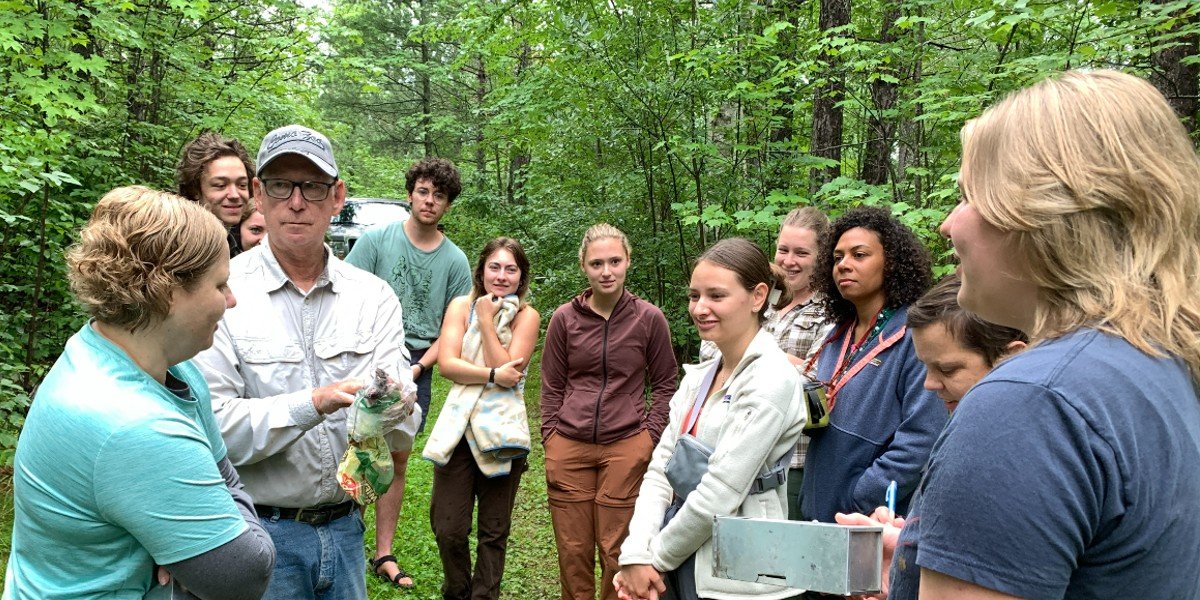July 2024
After a weirdly warm and dry winter, an unusually wet (and buggy) spring. We’re fortunate to be a bit less wet than other places and hope for a drier summer across the state.
This summer we welcome:
A variety of research project groups from the University of Minnesota and elsewhere
- An Aukema Entomology Lab project studying the ecological role and forest regeneration impacts of eastern spruce budworm.
- The Silva Lab as they continue surveys of vegetation response to the 2021 Greenwood Fire. (Thank you to Laura Reuling, Silva Lab Researcher, for our current banner image of the rainbow over Fall Lake!)
- The Eastern Hemlock Project’s on-site planting, monitoring and plot maintenance crew as they develop planting guidelines for Minnesota’s only endangered tree species.
- An examination of the genetic diversity of blackberry species in the wild for conservation and potential breeding improvements for local cultivation.
- A study of the genetic identity and ecology of non-native honeysuckles in Minnesota and their relationship to the success of a crop pest, spotted wing drosophila (fruit fly), to inform management of these invasive species.
- A forest biometrics project, to develop ground-tested statistical modeling to facilitate carbon stock estimation, validate forest productivity and wildlife habitat, and aid landowners seeking to enter carbon markets.
- A geology PhD project creating an educational trail in Lake Vermilion - Soudan Underground Mine State Park.
- The long-term, on-site B4WarmED climate research project.
- The Monitoring Avian Productivity and Survivorship, a cooperation between the Institute of Bird Populations, the Superior National Forest and HWRC is banding and collecting data June – July. They are also collecting feather samples to assist with two LCCMR-funded research projects requiring genomic and isotopic data.
Two University of Minnesota classes
- The College of Earth and Environmental Sciences’ Advanced Field Geology course
- The Forest Resources Department's Park and Protected Area Management Field Studies class
And
- The University Honors Program geology cohort
Facilities improvements are in progress, as always. The Lodge kitchen has a beautiful new floor. A complete water system upgrade is slated for September.
Check out the article, People, Fire, and Pines: How Fire Use by the Anishinaabeg Shaped the Boundary Waters by Clare Boerigter.
Learn more about activities at the Hubachek Wilderness Research Center and its big-sister research station, the Cloquet Forestry Center, in our View From the Woods 2023 newsletter.
News
Even modest warming could cause major changes for forests in the Great Lakes region and southern Canada
Even relatively modest climate change could dramatically alter Minnesota’s Northwoods and the southern boreal forest that runs from eastern Canada to Alaska, according to a rare long-term experiment by a team of researchers led by U of M professor Peter Reich.
Legacy Q&A with Andy David
Join us in congratulating Andy David, current Director of Operations for the Cloquet Forestry Center and Hubachek Wilderness Research Center, on his upcoming retirement. Read more to find out what Andy is looking forward to in his retirement, and the things he will miss most from his time with the U of M.



